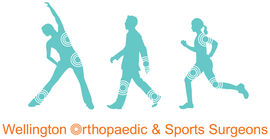Wellington > Private Hospitals & Specialists >
Mr Fred Phillips - Orthopaedic Surgeon
Private Service, Orthopaedics
Today
Description
Mr Fred Phillips
Fred works at Bowen Hospital in the private sector and CCDHB in the public.
What is Orthopaedics?
This is an area that deals with conditions of the musculoskeletal system (disorders of bones and joints of the limbs and spine). The specialty covers a range of different types of conditions starting with congenital (conditions which children are born with) through to degenerative (conditions relating to the wearing out of joints). The field of orthopaedics covers trauma where bones are broken or injuries are sustained to limbs.
Consultants
-

Mr Fred Phillips
Orthopaedic Surgeon
Referral Expectations
You need to bring with you:
Hours
| Mon – Fri | 8:00 AM – 5:00 PM |
|---|
Procedures / Treatments
For elderly patients joint replacement surgery is commonly required to treat damaged joints from wearing out, arthritis or other forms of joint disease including rheumatoid arthritis. In these procedures the damaged joint surface is removed and replaced with artificial surfaces normally made from metal (chromium cobalt alloy, titanium), plastic (high density polyethelene) or ceramic which act as alternate bearing surfaces for the damaged joint. These operations are major procedures which require the patient to be in hospital for several days and followed by a significant period of rehabilitation. The hospital has several ways of approaching the procedure for replacement and the specifics for the procedure will be covered at the time of assessment and booking of surgery. Occasionally blood transfusions are required; if you have some concerns raise this with your surgeon during consultation.
For elderly patients joint replacement surgery is commonly required to treat damaged joints from wearing out, arthritis or other forms of joint disease including rheumatoid arthritis. In these procedures the damaged joint surface is removed and replaced with artificial surfaces normally made from metal (chromium cobalt alloy, titanium), plastic (high density polyethelene) or ceramic which act as alternate bearing surfaces for the damaged joint. These operations are major procedures which require the patient to be in hospital for several days and followed by a significant period of rehabilitation. The hospital has several ways of approaching the procedure for replacement and the specifics for the procedure will be covered at the time of assessment and booking of surgery. Occasionally blood transfusions are required; if you have some concerns raise this with your surgeon during consultation.
The division of a crooked or bent bone to improve alignment of the limb. These procedures normally involve some form of internal fixation, such as rods or plates, or external fixation which involves external wires and pins to hold the bone. The type of procedure for fixation will be explained when the surgery is planned.
The division of a crooked or bent bone to improve alignment of the limb. These procedures normally involve some form of internal fixation, such as rods or plates, or external fixation which involves external wires and pins to hold the bone. The type of procedure for fixation will be explained when the surgery is planned.
Over the last 30 years a large number of orthopaedic procedures on joints can be performed using an arthroscope, where a fiber optic telescope is used to look inside the joint. Through this type of keyhole surgery fine instruments can be introduced through small incisions (portals) to allow surgery to be performed without the need for large cuts. This allows many procedures to be performed as a day stay and allows quicker return to normal function of the joint. Arthroscopic surgery is less painful than open surgery and decreases the risk of healing problems. Arthroscopy allows access to parts of the joints which can not be accessed by other types of surgery.
Over the last 30 years a large number of orthopaedic procedures on joints can be performed using an arthroscope, where a fiber optic telescope is used to look inside the joint. Through this type of keyhole surgery fine instruments can be introduced through small incisions (portals) to allow surgery to be performed without the need for large cuts. This allows many procedures to be performed as a day stay and allows quicker return to normal function of the joint. Arthroscopic surgery is less painful than open surgery and decreases the risk of healing problems. Arthroscopy allows access to parts of the joints which can not be accessed by other types of surgery.
In many cases tendons will be lengthened to improve the muscle balance around a joint or tendons will be transferred to give overall better joint function. This occurs in children with neuromuscular conditions but also applies to a number of other conditions. Most of these procedures involve some sort of splintage after the surgery followed by a period of rehabilitation, normally supervised by a physiotherapist.
In many cases tendons will be lengthened to improve the muscle balance around a joint or tendons will be transferred to give overall better joint function. This occurs in children with neuromuscular conditions but also applies to a number of other conditions. Most of these procedures involve some sort of splintage after the surgery followed by a period of rehabilitation, normally supervised by a physiotherapist.

Contact Details
-
Phone
(04) 464 0035
-
Fax
(04) 479 2217
Email
Wellington Orthopaedic and Sports Surgeons
Bowen Specialist Medical Centre
Bowen Hospital
98 Churchill Drive
Crofton Downs
Wellington 6035
Street Address
Wellington Orthopaedic and Sports Surgeons
Bowen Specialist Medical Centre
Bowen Hospital
98 Churchill Drive
Crofton Downs
Wellington 6035
Postal Address
Bowen Hospital
98 Churchill Drive
Crofton Downs
Wellington 6035
Was this page helpful?
This page was last updated at 4:16PM on September 12, 2024. This information is reviewed and edited by Mr Fred Phillips - Orthopaedic Surgeon.
